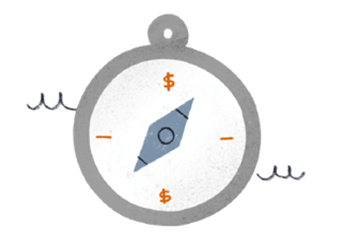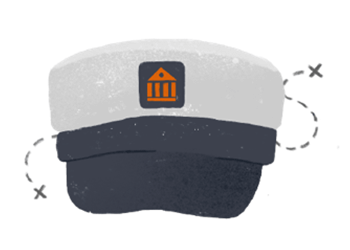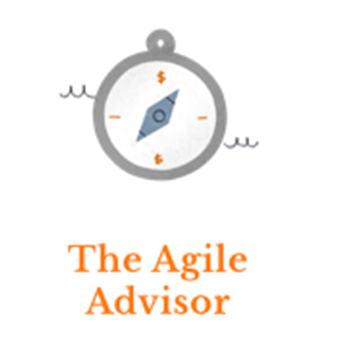
The New Roles of Engagement
I. The opportunity
Traditional financial institutions, prior to the COVID-19 crisis, held a tenuous grip on digital customer engagement. Prompted by necessity more than interest, customer engagement with financial digital platforms has been largely transactional and dispassionate, with the average consumer spending more time checking weather apps than logging on to their personal finance and banking apps.1
COVID-19 has temporarily flipped the script on engagement, presenting a compelling moment for financial institutions to re-examine their digital consumer-engagement strategies.
The combination of increased attention to financial accounts, near-constant connection to our devices, and a longer-term trend of burgeoning engagement in personal finance drives a unique opportunity for institutions to differentiate themselves with a new value proposition for their digital banking platforms.
Today, customers of all types – from retail consumers to small business owners and high-net-worth investors – are hyper-attuned to their financial health, with many struggling to understand the best path forward for their accounts. Billions of people are in lockdown around the world, captively engaged with their digital devices. And both these upticks are happening in the context of a multi-year increase in consumer interest in financial literacy and active investment – almost all of which has taken place outside the purview of traditional financial institutions.
72%Increase in usage of fintech apps in Europe during COVID-19 crisis2 |
600%Increase in subscriber base for the /r/personalfinance sub-reddit since 2015, from 2 million to 14 million3 |
Financial Institutions will do well to ride these tailwinds while they are blowing strong.
Doing so requires cultivating a meaningful and differentiated digital-engagement strategy that responds to consumer desire for increased financial resilience, while digging deep into each institution’s unique capabilities.
It means driving real differentiation in the value proposition – and service offerings – to create competitive defensibility. In short, it will require institutions to re-imagine the ongoing roles their financial platforms can play in the everyday lives of customers – today and well after any economic crisis.
II. The innovator’s response
Rethinking customer engagement through digital platforms will require moving beyond being a transactional product facilitator and towards becoming a holistic financial partner for retail, affluent, and small-business customers. This can be done by augmenting the role these platforms play in customers’ lives, imbuing core financial products with additional insights and tools to empower customers’ financial resilience, and which are differentiated and compelling to customers. It requires innovation.
We see three expanded roles financial institutions can embrace within existing digital platforms to sustainably capture heightened engagement in service of building long-term customer relationships.
 |
The Empowering EducatorA financial coach that understands each customer’s unique economic situation (based on personal banking accounts) and supplies the right answers to top-of-mind questions. |
 |
The Agile AdvisorA mentor that utilizes new communication tools to guide customers on a financial path customized to their economic status, providing enhanced data along the way to meet their unique financial goals. |
 |
The Proactive PartnerA long-term ally that supports and empowers customers through up and down markets, prioritizing long-term relationship building over short-term profits. |
Of course, there is no one size fits all.
Indeed, long-term defensibility will rely on adapting these roles to be right for each organization’s ethos and brand, assets and capabilities and, of course, customers.
It will require true innovation to develop a consumer-facing digital program that goes beyond repackaging, fast following digitally native firms, or better CX and CI.
Embracing today’s opportunity to build long-term engagement requires a thoughtful approach to repositioning existing offerings – and to creating the right new adjacent services to seize market opportunities.
Financial institutions can do this through purposeful, agile innovation, iterating through a cycle of experimentation, learning, and building.
- Experimentation – apply and test best practices from digitally-fluent fintech companies who have proven adept at communicating empowering and educational messages to their audiences.Inspiration: Ellevest’s weekly newsletters, for example, build subscribers’ financial literacy with actionable insights on investing and saving that reflect the ups and the downs of the market, delivered in the style and perspective of an Empowering Educator. These insight-driven emails serve as a business-development tool for Ellevest to attract new investors.
-
Learning – analyze the performance and customer response from your experiments to modify and evolve new offerings that better suit specific needs and interests.
Inspiration: Personal Capital’s free financial tools enable users to view their assets across multiple banking accounts, with the company layering in Agile Advisor insights learned from aggregate consumer behavior patterns. In turn, the company is gaining deep consumer insight that can be used to inform new product and service offerings.
- Building – develop in-house capabilities to design responsive and empathetic information offerings wrapped around your core products to increase daily engagement for customers who will increasingly demand a more transparent and convincing value proposition post-crisisInspiration: Apple’s product ecosystem consistently (over)delivers on customer expectations; two decades into creating devices omnipresent in our lives, Apple is now leveraging that credibility to break into banking, with the Apple Card. In turn, Apple is adding consumers’ spend data to its long list of consumer insights.
Leading with financial empowerment and following with actionable data and insights built on familiar digital platforms can help financial institutions become beacons of light amidst economic storms, capturing customer mindshare and trust that can outlive the current crisis.
To help initiate your pivot to a new model of customer engagement, F212 has developed a series of thought-starters at the intersection of expanded roles for the financial institution and consumer types.
For retail consumers, how might we…?
 |
Reclaim mindshare by providing easily digestible insights on federal tax updates, how to manage debt (e.g. student loan debt, mortgages), and navigating credit score impacts resulting from COVID. Ex. Automated mobile prompts with actionable recommendations based on monthly direct-deposit data and debit-card usage. |
 |
Drive financial self-empowerment via access to behavioral data (e.g. savings, spending, investing) of comparable peer groups. Ex. Digitally accessible peer benchmarks based on age, income, and region with customized insights on how to adjust/catch-up to financial objectives. |
 |
Present updated financial offerings based on a customer’s economic well-being to offer the right product at the right time for the right purpose. Ex. An online portal that utilizes customer data to present curated product offerings as needs change. |
For HNW consumers, how might we…?
 |
Provide proactive tactical insights on how customers can protect or strengthen portfolio assets during periods of increased market volatility. Ex: Pop-up scenario analyses to help customers understand historic performance of their specific asset-allocation mix. |
 |
Highlight average asset-allocation mixes of comparable peer groups to help customers assess how far ahead (or behind) they are on their investment journey. Ex. Proactive prompts help clients take action to reallocate assets across risk/return preferences impacted by sudden shocks. |
 |
Digitally connect customers to top wealth advisors and comparable peers to identify new wealth-generating opportunities. Ex. Exclusive social platform to share unique investment and JV opportunities and thought leadership. |
For small business consumers, how might we…?
 |
Inform SBCs on ways to proactively monitor and manage their liquidity across personal and business finances. Ex: Modify common account interfaces for small-business customers to run scenario analyses and drawdowns using personal account data and expected business capital commitments. |
 |
Support SBCs through the multi-phase defense, mitigation, and growth planning cycle required by the current crisis to optimize for cash flow and longer-term growth objectives. Ex. Leverage and adapt corporate client advice on navigating the COVID crisis to formulate short-form insights for small-business planning. |
 |
Design engagement opportunities that reinforce SBC’s growth ambitions and owners’ CEO role vs. approaching them as another retail customer. Ex. Facilitate an accessible digital concierge that provides support to SBCs, e.g. with credit-card fee and loan deferrals, and help customers evaluate pivot and growth opportunities for their businesses. |
III. The Fahrenheit 212 approach: money, magic, mechanics
At Fahrenheit-212 our approach to new growth opportunities pairs business acumen with customer empathy and is layered with a critical understanding of technology. It’s where the money and magic meets the mechanics. This approach has consistently delivered predictable, sustainable growth for our clients for more than 15 years. We are ready to help you accelerate your digital platforms to deliver on consumer expectations as partners in financial resilience.
SOURCES
1 – deVere Group analysis, 2020
2 – Reddit data through April 2020
The information contained herein is provided for general informational purposes only and does not create a professional or advisory relationship. It is provided without warranty or assurance of any kind.
© Copyright 2020 Capgemini America, Inc.

Colleen Galbraith is an Executive Director of Strategy and Head of Growth & Strategy at global innovation and design firm frog. With a career in the private and public sectors across continents, Colleen brings with her a passion for building businesses and developing breakthrough innovations that solve big problems. Colleen works on growth and innovation strategy, investment strategy and M&A with a wide range of Fortune 500 and private equity clients. She spent 12 years working with UNICEF and others in international development in sub-Saharan Africa and Latin America before becoming a corporate strategist.
Colleen holds an MBA from INSEAD, a Master of International Affairs from Columbia University and a Bachelor of Arts from Wesleyan University. She has worked and traveled in 80+ countries and is passionate about helping global organizations innovate, grow and enter new markets.

Mauricio is a Consultant on the Idea Development team at Fahrenheit 212’s New York Office. Mauricio leans on his passions for puzzle solving, analytics, and creative storytelling to deliver compelling solutions for F212’s clients. Mauricio graduated with a B.A. in Government from Harvard University and previously worked in the Investment Management Division at Goldman Sachs.
We respect your privacy
We use Cookies to improve your experience on our website. They help us to improve site performance, present you relevant advertising and enable you to share content in social media. You may accept all Cookies, or choose to manage them individually. You can change your settings at any time by clicking Cookie Settings available in the footer of every page. For more information related to the Cookies, please visit our Cookie Policy.